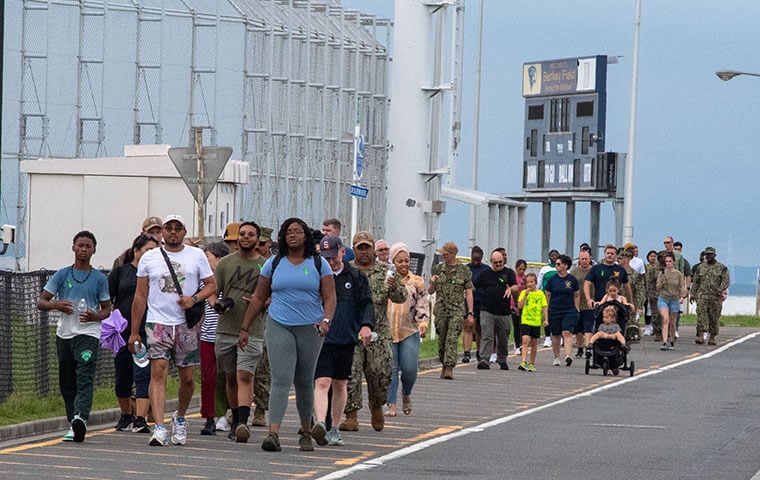 YOKOSUKA, Japan (August 22, 2023) – United in purpose, community members at Commander, Fleet Activities Yokosuka (CFAY) journeyed through "A Walk to Remember," marking National Suicide Prevention Awareness Month. (Navy Photos by Garrett Cole) The appearance of U.S. Department of Defense (DoD) visual information does not imply or constitute DoD endorsement.
By: FEDweek Staff
YOKOSUKA, Japan (August 22, 2023) – United in purpose, community members at Commander, Fleet Activities Yokosuka (CFAY) journeyed through "A Walk to Remember," marking National Suicide Prevention Awareness Month. (Navy Photos by Garrett Cole) The appearance of U.S. Department of Defense (DoD) visual information does not imply or constitute DoD endorsement.
By: FEDweek StaffThe Navy needs to take steps to improve its suicide mitigation and response plan, according to the Department of Defense Inspector General.
Recognizing that the Navy has taken steps to address the issue, the IG nevertheless stated that the service still must face the task of ensuring that commanding officers have a suitable crisis response plan in place upon which they can rely.
The IG based its findings upon a survey of U.S. Fleet Forces Command and U.S. Pacific Fleet commanding officers. The 277 responses the agency received showed that 177 of them could provide details of their crisis response plans. Of those responses, six percent “were not tailored to the command,” and 21 percent did not provide a listing of local resources and contact information.
Also, 49 percent did not provide a required Sailor Assistance and Intercept for Life referral.
“This happened because Navy policy lacks a governance mechanism to ensure commanding officers have a tailored crisis response plan in place and that the plan contains key elements,” the IG wrote.
Without such a plan, the report stated, the service “risks inadequate identification and oversight of and response to a sailor in crisis, as well as improperly restricting access to lethal methods of suicide.”
Shutdown Stalls Hegseth’s Reforms on Two Fronts as Pentagon Accelerates Cuts
Army Issues New Grooming Policy
Pentagon Orders New Task Force, Disbands Counter‑Drone Office
Trump to move Space Command headquarters out of Colorado
Civilian FERS Now? How to Buy Back Your Military Time if You Stand to Gain
Credit for Military Service for Federal Retirement Annuities

